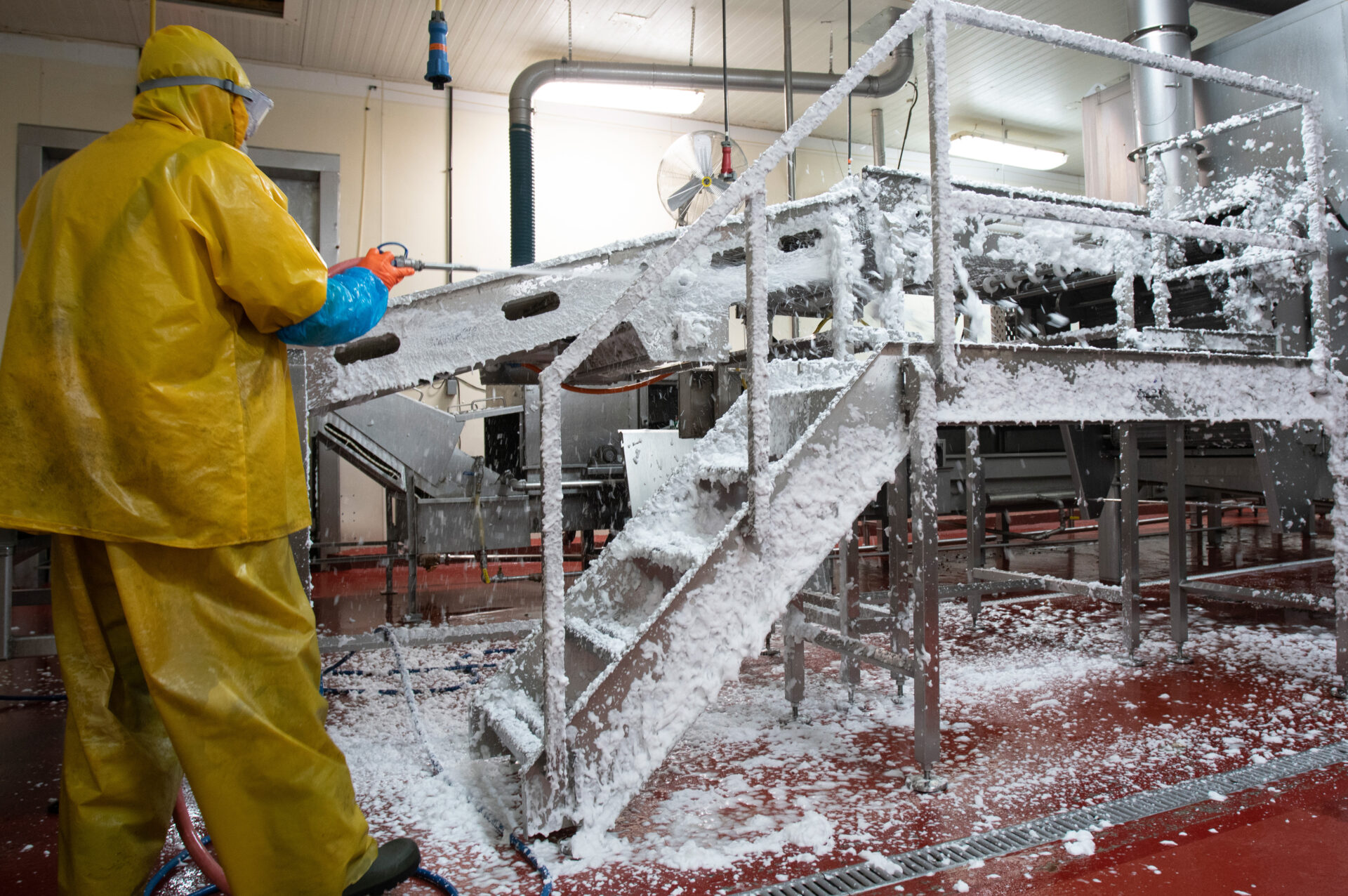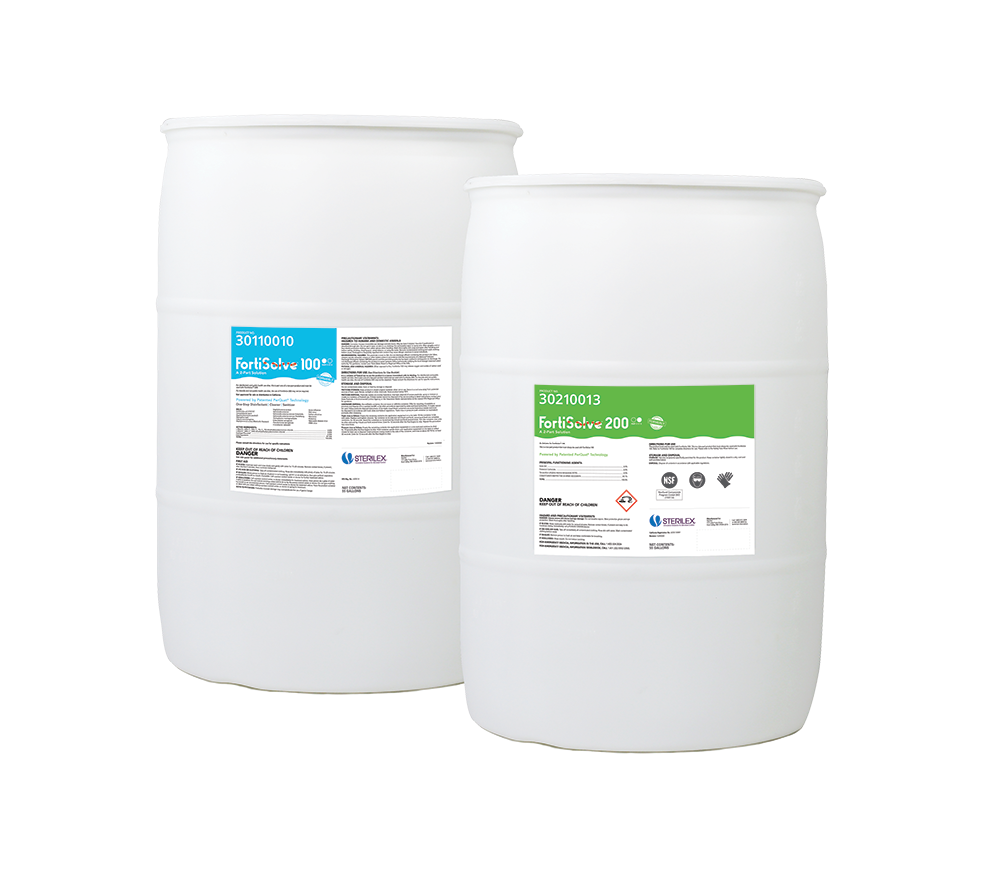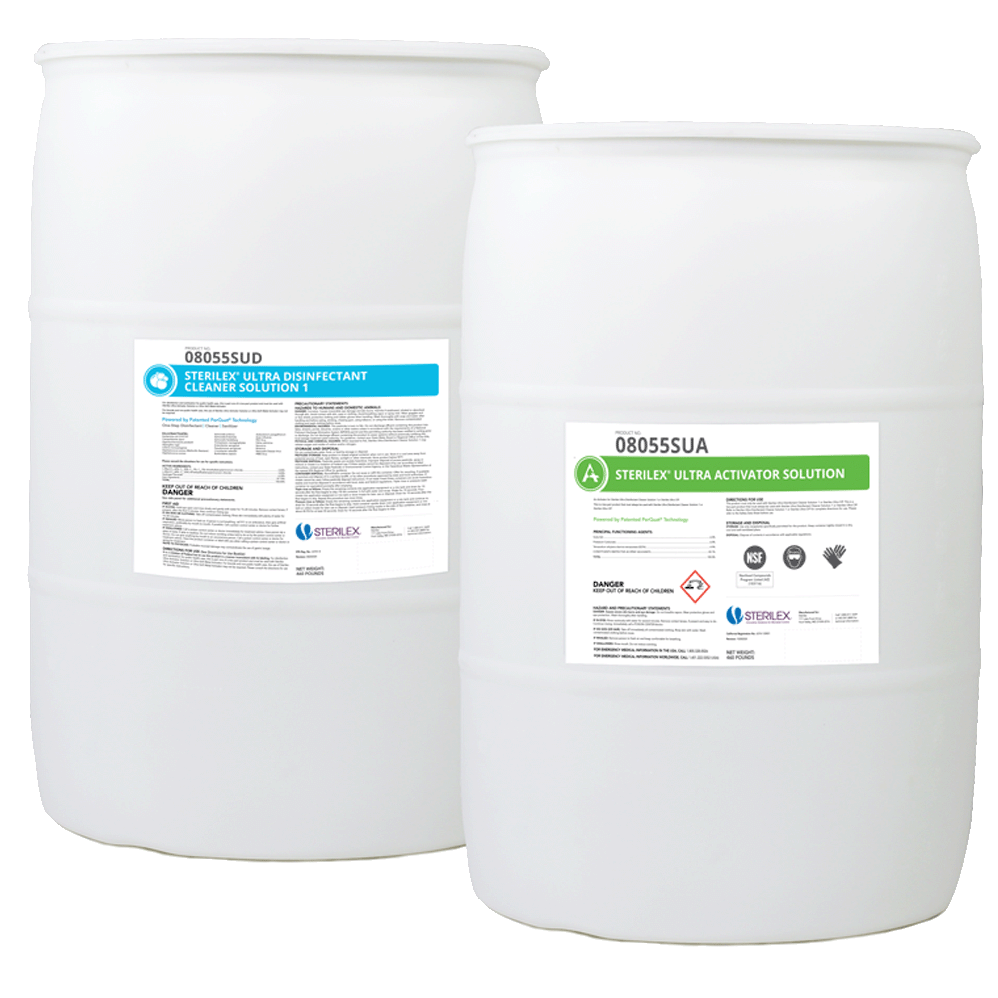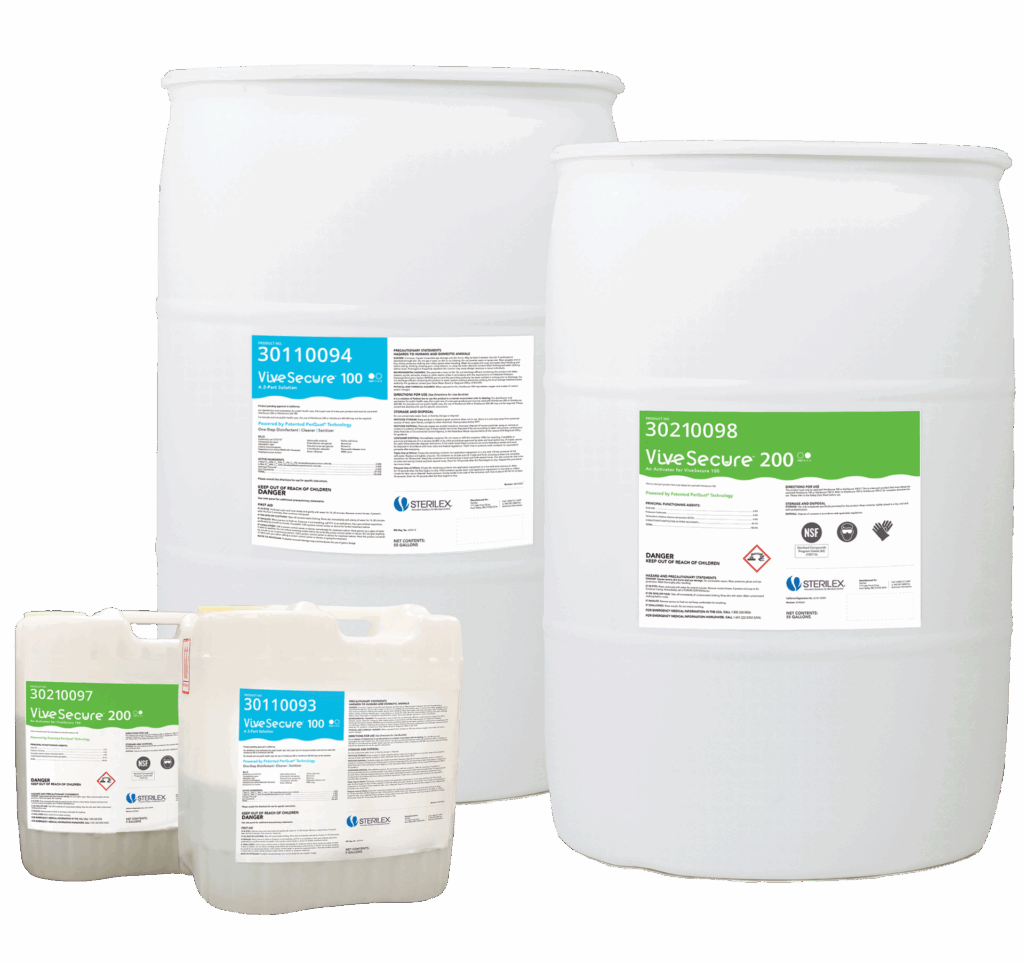Desinfecção ambiental
Gerenciar as ameaças à segurança alimentar em áreas além da Zona 1
Procurar + Destruir Biofilme
As instalações de processamento de alimentos - especialmente as mais antigas - podem ter um número excessivo de áreas ideais para o crescimento de patógenos e biofilmes. A revisão do projeto sanitário deve ir além das superfícies de contato com os alimentos e incluir as Zonas 2 e 3, com foco nas estruturas de enquadramento e suporte. O desgaste geral das instalações cria rachaduras e outros nichos, criando um lar perfeito para o biofilme.
Sterilex Tecnologia PerQuat foi projetado para colapsar a matriz protetora do biofilme, penetrar profundamente no biofilme para matar os agentes patogênicos e dissolver e remover fisicamente a estrutura do biofilme.
Aumento Eficiência operacional + Sustentabilidade
Estabelecer uma linha de base microbiana
As químicas Sterilex e PerQuat são os produtos mais confiáveis para enfrentar desafios microbianos difíceis.
Aumentar os rendimentos
Diminua o risco de recalls de produtos, tempo de inatividade relacionado à qualidade e retenções devido à contaminação do produto.
Evite riscos de contaminação cruzada
Elimine os patógenos de segurança alimentar em áreas fora da Zona 1 para evitar que entrem em contato com alimentos e superfícies de contato com alimentos.
Reduzir a mão de obra e economizar tempo
Tenha confiança e "faça certo da primeira vez" para voltar à produção mais rapidamente. As superfícies ambientais não requerem enxágue.

"Cachinhos Dourados" Espuma
A formação de espuma é o método comum de aplicação de sanitizantes e desinfetantes em superfícies de fábricas de processamento de alimentos. Entretanto, nem todas as espumas são criadas da mesma forma. O objetivo da espuma é garantir que os ingredientes ativos se fixem na superfície. Ao contrário dos produtos sanitários tradicionais com alta formação de espuma, que exigem longos períodos de contato, os desinfetantes Sterilex PerQuat proporcionam resultados superiores em apenas 10 minutos.
Problemas com espuma muito espessa:
- Espuma espessa = mais água. A espuma mais espessa é mais difícil de enxaguar e requer mais água.
- Espuma espessa = mais química. Somente a química que toca a superfície mata os agentes patogênicos, não a espuma extra.
- Problemas de penetração. A espuma espessa pode ter dificuldade para se infiltrar e fluir nos nichos de abrigo.
- Engano visual: A espuma espessa pode parecer impressionante, mas não necessariamente resolve os problemas microbianos.
Problemas com espuma muito fina:
- A espuma fina pode secar muito rapidamente e não é capaz de atingir o tempo de contato necessário de 10 minutos para matar os patógenos.
- É mais difícil ver onde a espuma foi aplicada e garantir a cobertura completa.
Produtos em destaque
Descubra nossos melhores produtos desenvolvidos para seu setor ou aplicação.
Relacionado Setores
Recursos relacionados
Explore nosso blog, white papers, estudos de caso e muito mais para obter informações e insights mais detalhados.


